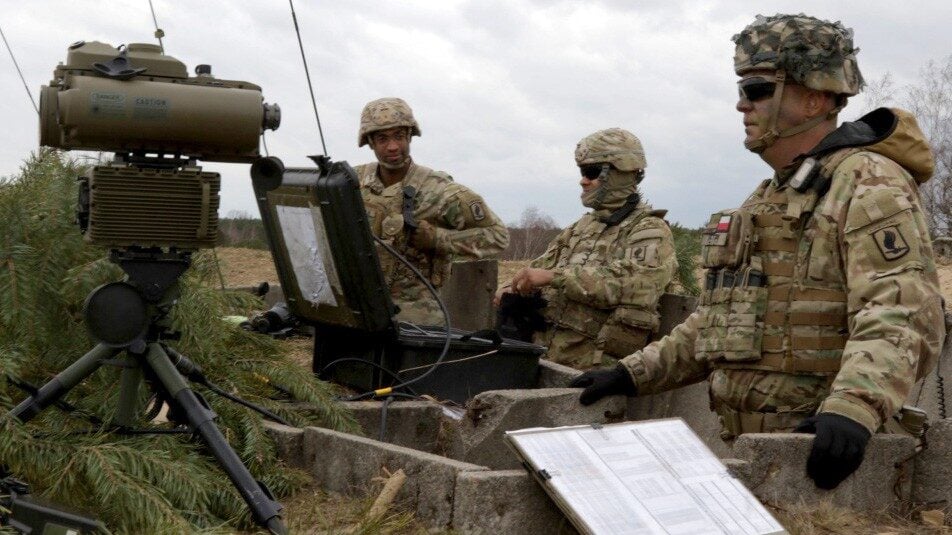JASPREET GILL

The Army is making progress on several programs on the electronic warfare, intelligence and sensors front, and the official in charge of making those efforts a success is gearing up for some new starts over the next fiscal year.
Speaking with reporters on Tuesday, Brig. Gen. Ed Barker, program executive officer for intelligence, EW and sensors, provided some updates on already-established EW programs and new starts planned for fiscal 2025 and beyond. Those include:
- Theater Signals Intelligence Program: TSIG, a new start in FY25, will “provide the tactical commanders at echelons above corps with a forward deployable and remotely or even locally controlled signals intelligence systems and supporting potential … contingency operations,” Barker said. The effort is a “conglomeration of existing capability” that supports theater intelligence collection, Kenneth Strayer, project manager for EW and cyber, added.
- High Altitude Platform for deep sensing: Another new start in FY25 which has gained interest across the military services, the Army will be looking at what capabilities it can acquire “from either a high-altitude balloon, solar and fixed-wing aircraft, really looking at affordability and the balancing of low SWAP and high efficiency sensors to take advantage of HAP capabilities,” Barker said. You can expect to see more requests for information come out for HAP in the next four to six months, he added.
- Modular Electronics Spectrum System: This program, which uses electromagnetic techniques to confuse and disrupt adversaries, is planned to be a new start in FY26, and Barker said the capability is really important in the European theater right now.
- Spectrum Situational Awareness System: S2AS, a new start in FY25, can provide sensing and visualization and would allow commanders to see their command post signature in real time, Barker said.
- High Accuracy Detection and Exploitation System: The aerial intelligence program was recently approved to move into a middle tier acquisition for rapid prototyping, Barker said. Phase one of HADES will include two different aircraft with different sensor packages, and the goal is “to demonstrate the flexible aspect of the capabilities themselves and also to understand the best of breed that we want to pursue from a production standpoint,” he added.
- Terrestrial Layer System-Brigade Combat Team: After wrapping up an operational demo for the EW, cyber and signals intelligence platform in September, Barker said the Army is “on a good path to an operational assessment” with the TLS-BCT in FY25. An operational demo for the TLS-BCT Manpack, a smaller version of the TLS-BCT, was completed in November, and the service is heading towards a potential procurement decision in FY24. Another configuration meant to provide formations larger than the brigade level with longer-range EW systems, called the TLS-Echelons Above Brigade, is projected to begin fielding in FY26 to FY27, Strayer told Breaking Defense in a May 1 interview.
- Electronic Warfare Planning and Management Tool: A full deployment for EWPMT, a tool used by commanders to visual and control the electromagnetic spectrum, is planned for early FY24 and the Army is already looking at modernizing the software for the effort.
Progress On The Intelligence Front
The Tactical Intelligence Targeting Access Node, or TITAN, a tactical ground station that can process data across space and land-based sensors using artificial intelligence, is “one of the foundational elements from the intelligence modernization efforts within the Army, Barker said. In FY23, the Army continued rapid prototyping and soldier touchpoints for the effort with two vendors, Raytheon and Palantir.
Barker said the next step with TITAN is a down select to one vendor in the second quarter of FY24 through a prototype maturation phase, where the vendor will work on developing basic and advanced variants for the program. The advanced version will include a space kit developed by Northrop Grumman.
“What we’ll see is the TITAN Basic, which is intended to be more expeditionary and then the other part of this that we’ll see is we anticipate the TITAN program … will also start going down the path of what they call the software acquisition pathway. … And that software acquisition pathway is one of those elements that allow us to continue to be agile enough to address the emerging requirements.” Barker said.
The first unit that will get the advanced variant will also be issued during this time, followed by the basic variant being issued to its first unit in FY25. In FY26, the Army anticipates it will issue the final TITAN prototypes, complete rapid prototyping for the program and begin production of TITAN configurations, an Army spokesperson told Breaking Defense following the roundtable.
In August, Barker told Breaking Defense in an interview that a lot of his initial focus would be on the workforce and working through a 100-day plan to do so. On Tuesday, Barker said his office has “taken on an initiative to really look at ourselves from an organizational standpoint, as well as the talent management aspect of things.”
“So we have an outside organization that’s helping us kind of understand what we look like from the workforce aspect when it comes to skill sets,” he said. “And then, kind of the next phase that we’re looking at, is going to be sitting down with each of the program offices and doing deep dives into really the requirements they have across the [program objective memorandum] with the dollars associated with that, what requirements are coming.”
No comments:
Post a Comment